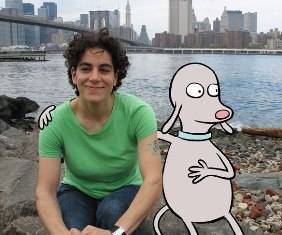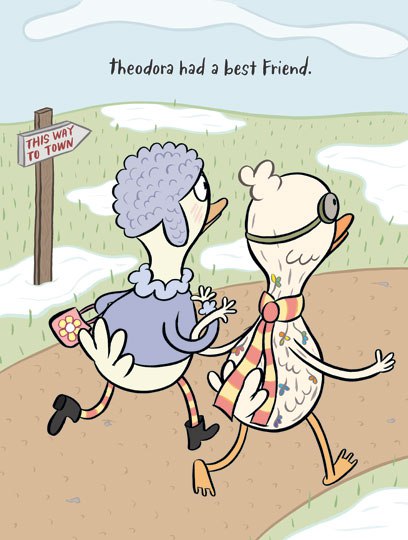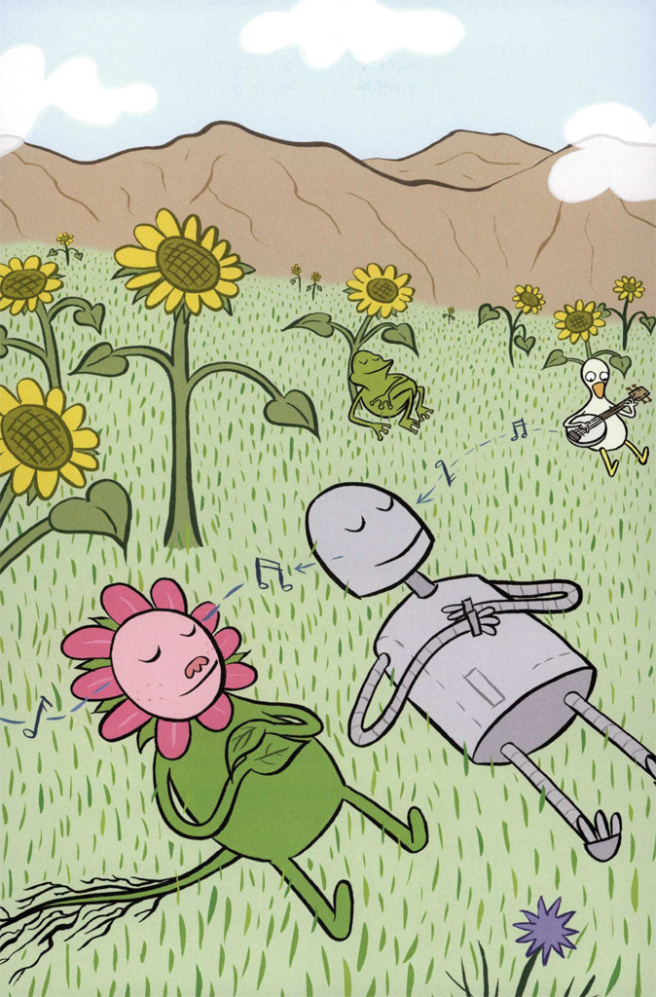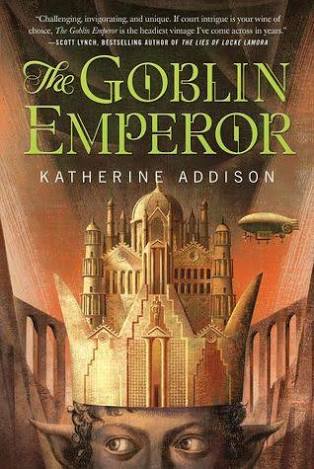This has gone on long enough. It is high time we discussed Sara Varon.

Last year, Varon released a collection of short stories, comics, and journal entries that discuss her creative process called Sweaterweather (First Second, 2016); part of the inspiration for starting this blog was so that I would have somebody to talk to about my love for writers like Sara Varon. Varon is less prolific than some of the other writers I’ve covered in the spotlights, but literally every last project she’s been involved with is delightful.
Graphic novels for middle-grade readers are kind of a big thing right now. We’re getting graphic-novel adaptations of classics, like Shannon, Dean, and Nathan Hale’s Rapunzel/Jack and the Beanstalk reboots, autobiographical stories like Raina Telgemeir’s work, and even strip comics collected into books, like Lincoln Pierce’s Big Nate series.
Respectfully, I submit that Sara Varon is the indisputable world champion of this cohort, and this is for two reasons:
1. In a world of reboots and the lamentable Everykid phenomenon I mentioned here, Varon’s characters are new, interesting, and a special blend of weird and relatable.
Sometimes this characterization is explicit, as in Odd Duck, which was written by Cecil Castellucci but illustrated with Varon’s signature whimsy, about the friendship of two ducks who don’t quite fit in with the other ducks, or anybody else either, and who aren’t even that much alike between themselves. But affection for the “odd duck” is a cornerstone of Varon’s milieu even when she’s not illustrating literally odd actual ducks. Her characters are all animals, anthropomorphic desserts, or robots, but they are somehow really believable, and her worldbuilding always makes a strange sort of sense. The anteater family in Robot Dreams eats ants, because obviously, but they also enjoy snowball fights and sledding, because obviously. Similarly, the robot shouldn’t swim, because hello rust, but it does enjoy dancing and books, because who doesn’t?
What’s more, Varon’s books explore the task that so often eludes the odd duck: how to forge real, genuine connections in a society that doesn’t seem to have set itself up to quite welcome you, personally. In Odd Duck‘s example, the ups and downs of Theodora and Chad’s friendship teaches them how to discern when differences are superficial and how they can coexist with connections that run much deeper. Chad may not share Theodora’s preference for tidyness and she may not care for his favorite music, but they share an appreciation for the notion that the world is much bigger than them and support each other’s instincts to be curious. 

In Robot Dreams, a graphic novel with a more literal take on the title of an Isaac Asimov short story, Robot and Dog are unable to circumvent the obstacles, both coincidental and self-inflicted, that separated them; they both end up moving on with others. But this more bittersweet ending is okay, too, because sometimes the stars just don’t align for particular relationships to work out, and sometimes that’s okay, too. And in Bake Sale, Cupcake learns how to balance her solitary pursuits with maintaining her relationships with others.
These lessons are thorny and complicated, but Varon presents them with warmth and fun and subtle humor.
2. Her books are genre-bending in ways that they don’t get credit for.
Her books are marketed to children and housed in children’s sections because of their pastel color palettes, ultra-G-rated content, and tenor of kindness and warmth. But they are the best example I have ever seen of media that is truly for “all ages,” if only we can get the heck over our need to categorize books by their shape and size.
Because Robot Dreams is a graphic novel with no text, the reader plays a significant role in infusing the story—-whose ending isn’t unhappy, but it’s not of the straightforward “and then everybody got exactly what they thought they wanted after all” variety—-with meaning and nuance. An eight-year-old can certainly read it, and sit with it, and discuss it from his perspective, but it was also pretty universally embraced by the college students I assigned it to in my university teaching days, and it’s a personal favorite of mine. (Side note: Robot Dreams‘s publisher, First Second, is pretty dope generally if you’re into graphic novels; I highly recommend checking them out.) Odd Duck works as a read-aloud if you skip the talk bubbles and stick with the narration in the captions, but is even better read silently to oneself.
Bake Sale and Chicken and Cat are perhaps Varon’s most early- and middle-grade-reader-specific titles, but these, like the aforementioned Justin Case books, are of the type that one can read as an adult concurrently with one’s child and still find engaging and fun.
If you have never read a book by Sara Varon, your life is more tragic than you know. Get thee to a library or a local bookstore and give her a try!
All ages
Robot Dreams, First Second, 2007.
Odd Duck (illust.; written by Cecil Castellucci), First Second, 2013.
Early- to middle-grade readers
Bake Sale, First Second, 2011.
Chicken and Cat, First Second, 2006.






